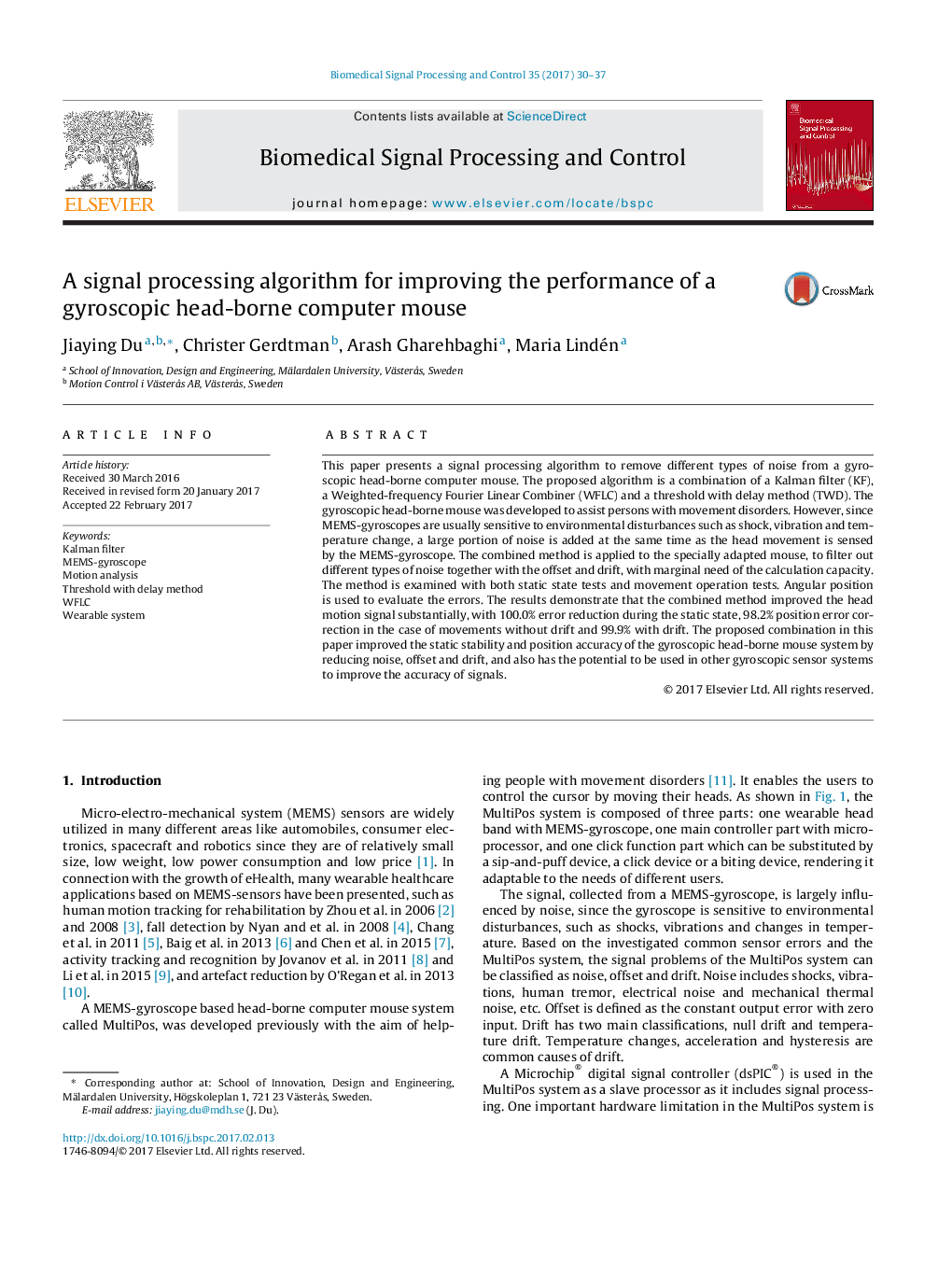| Article ID | Journal | Published Year | Pages | File Type |
|---|---|---|---|---|
| 4973581 | Biomedical Signal Processing and Control | 2017 | 8 Pages |
Abstract
This paper presents a signal processing algorithm to remove different types of noise from a gyroscopic head-borne computer mouse. The proposed algorithm is a combination of a Kalman filter (KF), a Weighted-frequency Fourier Linear Combiner (WFLC) and a threshold with delay method (TWD). The gyroscopic head-borne mouse was developed to assist persons with movement disorders. However, since MEMS-gyroscopes are usually sensitive to environmental disturbances such as shock, vibration and temperature change, a large portion of noise is added at the same time as the head movement is sensed by the MEMS-gyroscope. The combined method is applied to the specially adapted mouse, to filter out different types of noise together with the offset and drift, with marginal need of the calculation capacity. The method is examined with both static state tests and movement operation tests. Angular position is used to evaluate the errors. The results demonstrate that the combined method improved the head motion signal substantially, with 100.0% error reduction during the static state, 98.2% position error correction in the case of movements without drift and 99.9% with drift. The proposed combination in this paper improved the static stability and position accuracy of the gyroscopic head-borne mouse system by reducing noise, offset and drift, and also has the potential to be used in other gyroscopic sensor systems to improve the accuracy of signals.
Related Topics
Physical Sciences and Engineering
Computer Science
Signal Processing
Authors
Jiaying Du, Christer Gerdtman, Arash Gharehbaghi, Maria Lindén,
